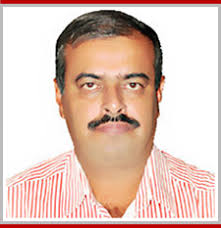Profile
Dr.Debasis Chakraborty did his Ph.D in Aerospace Engineering from Indian Institute of Science (IISc), Bangalore. He has worked in VSSC and DRDL for the last 32 years and currently he is working as technology director of Directorate of Computational Dynamics (DOCD) in DRDL. He has worked extensively in numerical simulations of high speed reacting and non reacting flows and provided useful aerodynamics and propulsion design inputs for satellite launch vehicle, strategic and tactical missiles. He is the fellow of Indian National Academy of Engineering, Institute of Engineers and Aeronautical Society of India and has received many awards including DRDO Scientist of the year, DRDO award for best innovation/futuristic development etc. He was the INAE-AICTE Distinguished Visiting Professor at IISc, Bangalore, and visiting professor at University of Hyderabad. He has published more than 235 research papers in various international journals and conferences in the area of CFD. As guest editor, He editeda special issue of Defence Science Journal on CFD.He was a member of aerodynamics and propulsion panels of AR&DB and expert panel member of National Supercomputing Mission and National Center for Combustion Research and Development (NCCRD).


